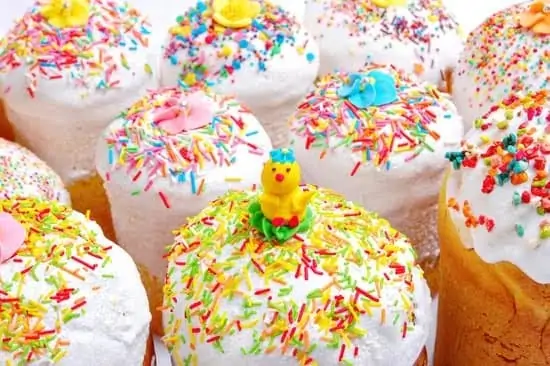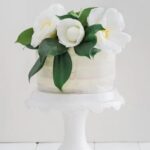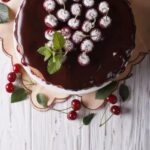The world of cake decorating is a feast for the eyes, and the icing on the cake plays a crucial role in creating stunning designs. Whether you’re an amateur baker or a professional pastry chef, mastering different icing techniques can take your creations to new heights. In this article, we will explore the art of cake decorating icing and uncover tips and tricks that will help you achieve beautiful and delicious results.
Choosing the right icing is essential for cake decoration. Different types of icing offer unique textures, flavors, and finishes that can elevate your creations to new levels. From classic buttercream to delicate royal icing and flawless fondant, each option offers endless possibilities for creativity. With the right technique and expertise, these icings can transform a plain cake into a work of art.
The excitement of cake decorating lies in its endless possibilities. Whether it’s piping intricate patterns and flowers, spreading smooth layers of buttercream, or sculpting lifelike figures from fondant, there is always something new to learn and explore. So let’s dive into the world of cake decorating icing as we unravel the secrets behind creating beautiful designs that are as delicious as they are visually stunning.
Types of Icing for Cake Decoration
When it comes to cake decoration, choosing the right icing is crucial. Different types of icings offer different textures, finish, and ease of use, allowing you to achieve various designs and effects on your cakes. Here are three popular types of icings that are commonly used in cake decorating:
- Buttercream: Buttercream icing is a classic choice due to its versatility and smooth finish. Made with butter or shortening, powdered sugar, and flavorings, buttercream can be easily tinted with food coloring to create vibrant shades for your cake decorations. This type of icing is perfect for piping intricate patterns, borders, and flowers onto cakes. It also works well for covering cakes smoothly before adding additional decorations.
- Royal icing: If you’re looking to create delicate and intricate designs on your cakes, royal icing should be your go-to option. Made with egg whites or meringue powder, powdered sugar, and lemon juice or cream of tartar, royal icing dries into a hard finish and provides a beautiful sheen to your cake decorations. It is particularly useful for creating lacework, elegant filigree patterns, or elaborate piping details.
- Fondant: Fondant is a popular choice among professional bakers as it gives a flawless and professional look to cakes. Made from sugar syrup and gelatin or marshmallows, fondant creates a smooth surface that can be rolled out like dough and draped over a cake for a sleek finish. Fondant can also be molded into 3D shapes or used in conjunction with other techniques such as piping or stenciling for added details.
Each type of icing brings its own unique qualities to the table when it comes to cake decoration. The choice ultimately depends on the desired outcome and personal preference of the decorator. Whether you prefer the versatility of buttercream, the intricacy of royal icing, or the professional look of fondant, experimenting with all three types can open up a world of possibilities for your cake designs.
Essential Tools and Materials
When it comes to cake decorating, having the right tools and materials is essential for achieving professional-looking results. Whether you are a beginner or an experienced cake decorator, having a well-stocked arsenal of tools will make all the difference in your creations. Here are some essential tools and materials that every aspiring cake decorator should have:
- Piping bags: Piping bags are a must-have for any cake decorator. They come in various types and sizes, including disposable and reusable options. Disposable piping bags are convenient for one-time use and easy cleanup, while reusable ones can save you money in the long run.
- Decorating tips: There is a wide variety of decorating tips available, each with its own unique shape and purpose. From round tips for outlines and writing to star tips for creating beautiful borders and rosettes, having a comprehensive set of decorating tips will allow you to explore different techniques.
- Angled spatulas: Angled spatulas are used to achieve smooth and even surfaces when applying buttercream icing. Their angled design makes it easier to control the application and create clean edges.
- Offset spatulas: Offset spatulas are another useful tool for spreading and smoothing buttercream icing. Their offset angle allows for better maneuverability, especially when working on larger cakes.
- Fondant tools: Working with fondant requires specialized tools. A rolling pin is needed to roll out the fondant into thin sheets, while fondant smoothers help achieve a flawless finish by removing air bubbles and smoothing out any imperfections.
Having these essential tools at your disposal will set you up for success in your cake decorating journey. Investing in quality tools will not only make the process easier but also ensure that your finished creations look professional and polished. Don’t be afraid to experiment and try out different techniques with these tools – you might discover new ways to bring your cake designs to life.
Mastering Different Icing Techniques
When it comes to cake decoration, mastering different icing techniques is essential for creating beautiful and professional-looking designs. Whether you are a beginner or an experienced baker, understanding and practicing these techniques will elevate your cake decorating skills to the next level. In this section, we will explore some of the most common icing techniques that every cake decorator should know.
Piping is a technique that involves using a piping bag and various icing tips to create intricate patterns, borders, and flowers on cakes. The key to successful piping is consistency in hand pressure and movement. Practice with different tips and experiment with different piping techniques to create unique designs.
Another important technique is spreading buttercream icing smoothly and evenly on the cake surface. This technique requires the use of an angled spatula or offset spatula to achieve a seamless finish. The key here is to apply even pressure while spreading the buttercream in long strokes, rotating the turntable if necessary.
For those who enjoy delicate designs and intricate details, stenciling with royal icing can add a touch of elegance to any cake. Stencils can be purchased or easily made at home using cardstock or acetate sheets. Simply hold the stencil against the cake surface and use a small offset spatula or palette knife to spread the royal icing over the stencil openings. Carefully lift off the stencil to reveal a beautiful design.
Lastly, fondant sculpting allows decorators to shape figures, objects, and decorations for their cakes. Fondant tools such as sculpting tools, veining tools, and modeling tools are essential for creating realistic shapes and textures with fondant. From simple bows and ribbons to intricate sculptures, fondant sculpting provides endless possibilities for creative expression.
By mastering these different icing techniques, you will be able to create stunning designs on your cakes. Remember that practice makes perfect, so don’t be afraid to experiment and try new things. The more you practice, the more confident you will become in your cake decorating skills. In the next section, we will explore some tips and tricks for achieving perfect cake icing.
Tips and Tricks for Perfect Cake Icing
When it comes to cake decoration, achieving the perfect icing is crucial. Whether you are a novice or an experienced baker, these tips and tricks will help you take your icing skills to the next level.
- Softening Buttercream: Softening buttercream can be a challenge, especially if you are working with refrigerated icing. To quickly soften buttercream, place it in the microwave for 5-7 seconds at a time, stirring in between. Be careful not to overheat the icing as it can become too soft and difficult to work with.
- Achieving the Right Consistency: The consistency of your icing plays a significant role in its application and final appearance. If your icing is too thick, add small amounts of milk or water until it reaches the desired consistency. On the other hand, if your icing is too thin, gradually add powdered sugar until it thickens.
- Coloring Icing: Whether you want vibrant or pastel shades, coloring your icing requires some know-how. For vibrant colors, use gel food coloring as they are more concentrated and won’t affect the consistency of your icing. If you prefer pastel shades, use liquid food coloring sparingly to prevent your icing from becoming too watery.
- Preventing Air Bubbles and Streaks: Nothing ruins a beautifully decorated cake like air bubbles or streaks in the icing. To avoid them, make sure to thoroughly mix your icing before using it on your cake. Additionally, always apply a thin crumb coat before adding another layer of icing to minimize any imperfections.
| Tips and Tricks |
|---|
| Softening Buttercream |
| Achieving the Right Consistency |
| Coloring Icing |
| Preventing Air Bubbles and Streaks |
With these tips and tricks in mind, you are well-equipped to create stunning cake designs that will impress your friends and family. Remember, practice makes perfect when it comes to cake icing, so don’t be afraid to experiment with different techniques and flavors. Soon enough, you’ll unlock your full cake decorating potential.
Troubleshooting Common Icing Problems
Cracks and air bubbles in royal icing: prevention and solutions
One of the common issues that bakers encounter when working with royal icing is cracks and air bubbles. Cracks can occur when the consistency of the icing is too thick or when it dries too quickly. To prevent cracks, it is essential to achieve the right consistency by adding small amounts of water to thin out the icing gradually.
Additionally, covering your work surface with a damp cloth or spraying a light mist of water over the icing while it dries can help prevent cracking. If cracks do appear, a quick fix is using a small paintbrush dipped in water to smooth them out before they dry completely.
Air bubbles can also be an annoyance when working with royal icing. They often form during the mixing process or when piping. To prevent air bubbles, take care to mix the royal icing gently and avoid overmixing as this can introduce more air into the mixture.
When piping, make sure to release any trapped air by consistently tapping and shaking your piping bag as you work. If air bubbles still persist after piping, carefully pop them with a toothpick or pin before allowing the icing to dry.
Buttercream that melts or smudges: tips for dealing with heat or humidity
Dealing with heat or humidity can pose challenges when working with buttercream icing, causing it to melt or smudge on your cake. To combat this issue, there are several steps you can take. Firstly, make sure your cake is properly chilled before applying buttercream. This will help keep the frosting firm and less susceptible to melting. Consider using shortening instead of butter in your recipe as shortening has a higher melting point and provides more stability in warm temperatures.
If you anticipate high temperatures or humidity during transportation or display, refrigerate your cake until just before serving to minimize any potential melting. Another helpful tip is to use a crusting buttercream recipe, which forms a dry and firm outer layer when it sets. This will help prevent smudging and retain the shape of your decorations. Lastly, avoid placing your cake in direct sunlight or next to heat sources to further prevent melting.
Fondant tears or cracks: solutions for a seamless finish
Working with fondant can sometimes result in tears or cracks, leading to an imperfect finish on your cake. To minimize the chance of fondant tears, ensure that your cake is completely covered and smooth with buttercream before applying the fondant. The buttercream acts as a barrier between the cake and the fondant, preventing it from sticking and tearing.
If tears do occur while laying the fondant onto the cake, don’t panic. A quick fix is gently smoothing over the tear with clean fingers or using a small decorator’s brush dipped in water. Pressing firmly but gently will help seal the tear without distorting or damaging the rest of the fondant.
For cracks that appear after applying the fondant, gently massage them with clean fingers to warm up and soften the fondant around the crack. Then, use a small amount of water applied with a brush or fingertip to adhere both sides of the crack together and smooth it out. If needed, you can also use excess fondant to cover up any major cracks by rolling it into long ropes or thin sheets.
By following these tips and taking your time during application, you can achieve a seamless finish on your cakes that will impress both visually and texturally.
Advanced Icing Techniques for the Pros
For those ready to take their cake decorating skills to the next level, mastering advanced icing techniques can truly elevate the art of cake decoration. These techniques allow for the creation of elegant and intricate decorations that will impress even the most discerning cake connoisseurs. Whether it’s adding ruffles and frills or achieving a stunning ombré effect, these advanced icing techniques will showcase your talent and creativity.
One popular advanced technique is creating ruffles and frills on cakes. This technique involves using a petal tip with a piping bag to create delicate waves or pleats in the icing. By controlling the pressure on the piping bag, you can create different sizes and shapes of ruffles, giving your cake a sophisticated and textured look.
Another impressive technique is achieving an ombré icing effect. This involves blending different shades of icing together to create a gradient effect, transitioning from one color to another smoothly. By using multiple shades of colored buttercream or fondant, you can achieve a stunning visual impact on your cake.
Piping flowers is another skill that separates professionals from amateurs in cake decorating. With just a few simple tips and proper technique, you can create lifelike buttercream flowers that will leave your guests in awe. From roses to daisies, mastering this advanced technique will allow you to add beautiful floral designs to your cakes.
Lastly, sculpting realistic fondant figures and objects adds an element of artistry to any cake design. With some practice and patience, you can shape fondant into three-dimensional figures like animals, characters, or even everyday objects such as purses or hats. Adding these intricate fondant sculptures to your cakes will surely impress anyone who sees them.
Mastering these advanced icing techniques requires time and practice, but they provide endless opportunities for creativity and innovation in cake decorating. Whether you choose to focus on one specific technique or combine them all into a masterpiece, the results will be sure to amaze. Don’t be afraid to experiment and push your creativity to new limits with these advanced icing techniques.
Practice Makes Perfect
Cake decorating is an art that requires practice and honing of skills. To help aspiring cake decorators unlock their potential, a step-by-step tutorial is provided here. By following these instructions, readers can master the basic techniques and gradually progress to more advanced designs and decorations.
Step 1: Preparing the cake and choosing the right icing
Before diving into the decorating process, it’s crucial to ensure that the cake is properly prepared. Start by trimming any uneven edges or domes from the top of the cake to create a level surface. Additionally, make sure the cake is cooled completely before applying any icing.
Choosing the right icing for your design is also essential. Consider factors such as the desired finish, intricacy of design, and personal preference. Buttercream is a versatile option that works well for most decorations and provides a smooth finish. Royal icing is ideal for intricate designs and delicate details. Fondant offers a flawless, professional look and allows for sculpting 3D figures.
Step 2: Basic icing techniques for covering the cake smoothly
To achieve a smooth surface on your cake, start by crumb coating it with a thin layer of icing. This will help seal in any loose crumbs and provide a firm base for additional layers. Use an offset spatula to apply an even layer of icing all over the cake.
Next, apply another thicker layer of icing using either a piping bag fitted with a round tip or an offset spatula. Start by applying large dollops of icing on top of the cake and use smooth motions to spread it evenly towards the edges. Ensure that there are no gaps or uneven spots.
For a perfectly smooth finish, use an angled spatula dipped in hot water to gently smoothen out any imperfections on the sides of the cake. Dip the spatula in hot water, wipe off the excess on a towel, and then glide it over the icing in long even strokes.
Step 3: Intermediate techniques for adding decorations and borders
Once the cake is smoothly covered, it’s time to move on to adding decorative elements. Piping bags fitted with different decorating tips can be used to create intricate patterns, borders, and even flowers. Experiment with different piping techniques such as shell borders, rosettes, or zigzags.
To pipe designs onto the cake, fill a piping bag with icing and twist it tightly at the top to ensure control over the flow of icing. Apply gentle pressure while piping and practice steady hand movements for consistent results. It’s helpful to practice piping designs on a parchment paper or wax paper before moving on to the cake.
In addition to piping, other techniques like stenciling can be used to add beautiful designs with royal icing. Place a stencil gently against the cake and use a spatula or palette knife to spread royal icing over the cut-out design. Carefully lift off the stencil and reveal your intricate pattern.
Step 4: Advanced techniques for intricate designs and figures
For those looking to take their cake decorating skills to the next level, advanced techniques offer endless possibilities. Sculpting figures out of fondant allows for lifelike creations that can enhance any cake design.
To sculpt with fondant, start by kneading it until it becomes pliable. Shape small sections at a time into desired forms such as flowers, animals, or objects. Use appropriate tools such as fondant cutters or modeling tools to add texture and details. Attach each piece using edible glue or by brushing water onto surfaces that need to stick together.
By practicing these step-by-step instructions and gradually working towards more advanced designs, aspiring decorators can unlock their full potential in cake decorating. Remember that perfection comes with practice, so be patient and enjoy the art of creating stunning cakes.
Conclusion
In conclusion, mastering the art of cake decorating icing opens up a world of endless possibilities for creating beautiful and stunning cakes. The right choice of icing can make all the difference in achieving a flawless and professional look. Whether it’s buttercream for versatility, royal icing for intricate designs, or fondant for a seamless finish, each type of icing brings its own unique qualities to the table.
With the essential tools and materials at hand, such as piping bags, decorating tips, and spatulas, you have everything you need to bring your cake decorating visions to life. By mastering different icing techniques like piping, spreading, stenciling, and sculpting with fondant, you can create dazzling patterns, smooth surfaces, intricate designs, and 3D figures.
While perfecting your cake decorating skills may take time and practice, it is definitely worth the effort. Softening buttercream quickly, achieving the right consistency of icing, coloring it vibrantly or subtly, and preventing common problems like air bubbles or melting are all part of the learning process. Remember that even professionals started out as beginners and through practice were able to unlock their potential in cake decorating.
So go ahead and experiment with different techniques and designs. Don’t be afraid to push your boundaries and try new things. Keep practicing and refining your skills because there is always room for improvement. And most importantly, enjoy the creative process while making your cakes look truly magnificent. With the right icing tips and tricks in your arsenal, there is no limit to what you can achieve in the world of cake decoration.
Frequently Asked Questions
What is the secret to perfectly frosting a cake?
The secret to perfectly frosting a cake lies in a few key techniques. First and foremost, it is important to ensure that your cake has cooled completely before attempting to frost it. This prevents the frosting from melting or slipping off. Secondly, crumb coating the cake is essential – this involves applying a thin layer of frosting all over the cake to seal in any loose crumbs.
Once the crumb coat has set, you can then apply a thicker layer of frosting for a smooth and even finish. Using an offset spatula or a bench scraper can help achieve straight sides and sharp edges. Additionally, rotating the cake on a turntable while frosting allows for more controlled application. Lastly, practicing patience and taking your time while frosting will help you achieve that perfect finish.
What are the best piping tips for beginners?
For beginners, there are several piping tips that work well and provide great results. One versatile option is the round tip (or plain tip) which comes in various sizes and is commonly used for making dots, writing messages, or creating outlines. Another beginner-friendly tip is the star tip (or open star tip), which creates beautiful rosettes, shells, and swirls of frosting easily.
It adds texture to your decorations with minimal effort required. Another favorite for beginners is the drop flower tip, which enables you to make lovely floral designs without much skill needed. And lastly, the leaf tip helps add realistic-looking leaves to your cake decoration.
How do you decorate a cake with frosting tips?
Decorating a cake with frosting tips requires some practice but yields impressive results once mastered. Start by filling a pastry bag fitted with your desired piping tip with prepared frosting that is at room temperature but not overly soft or runny as that may result in messy decorations. Hold the bag comfortably with one hand near its twist point while gently applying pressure with your other hand from above to guide the flow of frosting through the nozzle as desired shapes onto your cake surface – be it stars, roses or any other design.
Maintain consistent pressure and speed, and use a steady, even motion for smooth lines or swirls. Practice on parchment paper or a separate surface to get comfortable with controlling the flow of frosting before moving to your cake. And remember, experimenting with various tips will allow you to explore different designs and textures that can transform your cake into a work of art.

Welcome to our cake decorating blog! My name is Destiny Flores, and I am the proud owner of a cake decorating business named Cake Karma. Our mission is to provide delicious, beautiful cakes for all occasions. We specialize in creating custom cakes that are tailored specifically to each customer’s individual needs and tastes.





